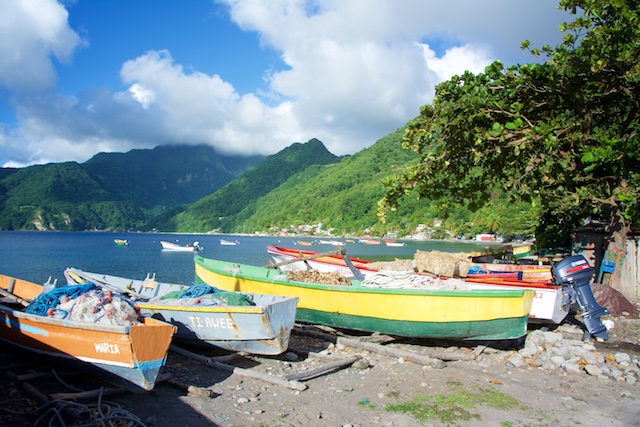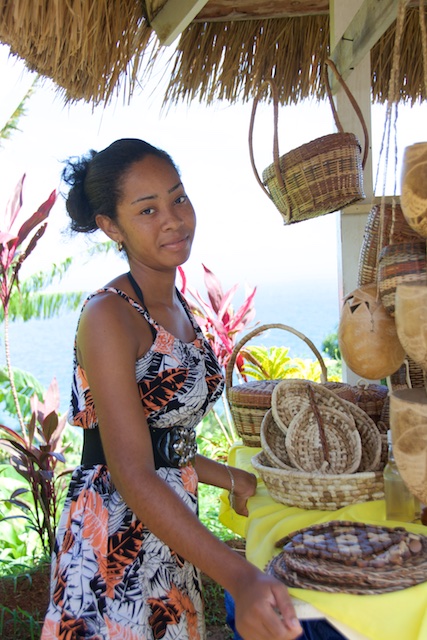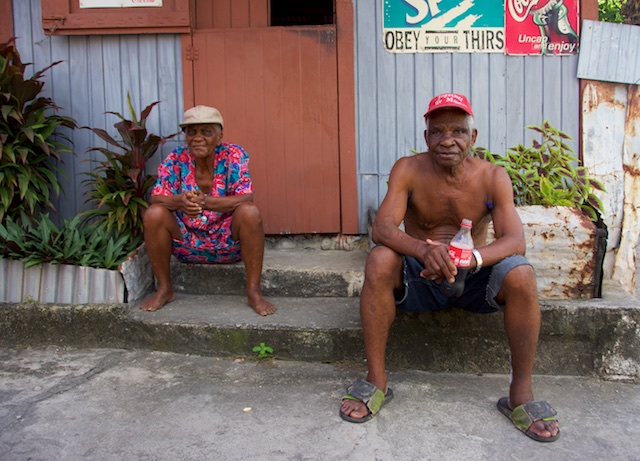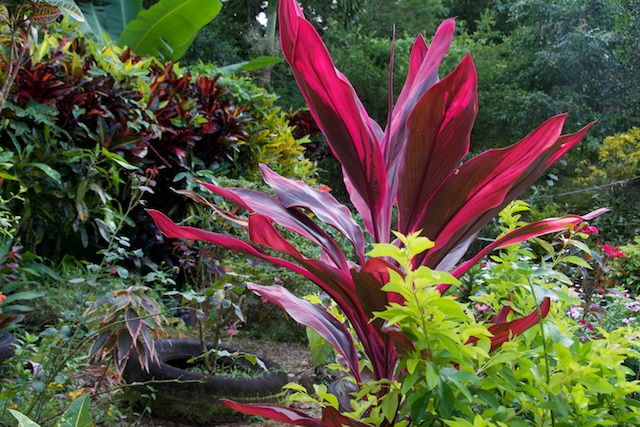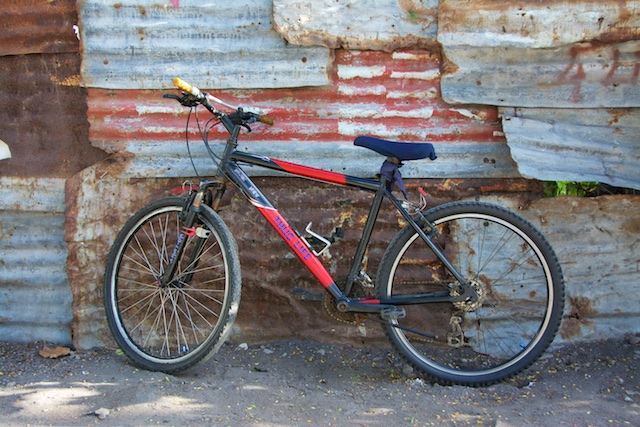Yesterday, on the beautiful little Caribbean island of Dominica, Pablo and I hired a driver and a guide to tour the island. He was a lovely man who described himself as “mixed race”, half Kalinago Islander (on his mom’s side) and half Black African (on his Dad’s side). Most of the island’s 71 thousand inhabitants are “mixed” with only a few thousand “pure-blooded Kalinago” tribesman left. His van and his driving (on the wrong, i.e. left, side of the road), were impeccable if a bit speedy on the windy mountain two lane, but brand spanking new highway that transverses the island from our lodging on Pagua Bay (outstanding!) to the capital town of Roseau. Our guide’s knowledge of the island, its history and botany, and also his current political insights were vast and freely given. He had one tiny, bothersome quirk, and that was that he punctuated every single piece of information with the moderately condescending interrogative, “Do you understand?” I’m sure the fact that the question was delivered with a strongly accented English (while not a Spanish accent) had everything to do with the fact that I woke up at 2:45 a.m. (en punto – I checked the clock) dreaming of being back in Spanish I under the instruction of one, Mrs. Palermo. (Cue her incessant “¿Comprende usted?”) To be fair here, Mrs. P’s incessant need to interrogate thusly might have been singularly annoying to me because I so rarely did “comprende” anything. Not in her class. Not in Miss White’s Algebra III/Trig class, and certainly not in Ms. Garamondi’s Chem. (Honestly, it’s a wonder I graduated high school at all!)
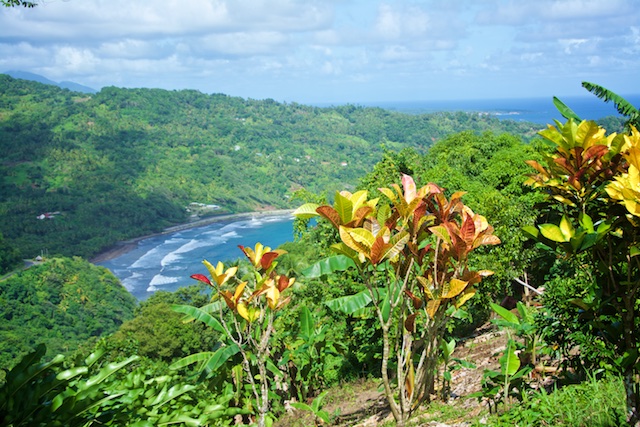
The unconscious is mysterious and unfathomable, (my discipline was Psychology – I know, I know, not a “real” science), so it’s little wonder as I’ve been bumming around the Caribbean for several weeks where fluency in Spanish would have made things much easier (in Puerto Rico, the Dominican Republic and yes, in Florida, too). Those locations and spending a day with our lovely, (if slightly supercilious), guide to Dominica, my own unconscious produced a dream (a truly alarming one) featuring my old High School Spanish teacher. I woke in a sweat and not only because it was 90 degrees Fahrenheit in the middle of the night.

If only Mrs. P had told me in Spanish I class, fifty years ago, how much fun it would be to carry on fluent conversations with people who live in other countries, or maybe if she could have known how very, very badly I would one day need desperately to locate a reasonably hygienic “baño” in the middle of a Cap Haitian, Haiti street, I might have been persuaded to study harder (or at all) and I would have known that in Haiti the people speak Creole first, then French, and significantly very few of them speak a word of Spanish. But, that’s travel for you. It provides endless opportunities for nostalgic regrets. I have a few. Perhaps more than my share. Nevertheless, I hold no grudge, except possibly that “D” Mrs. P gave me sophomore year that put the kibosh on my cheerleading career and got me kicked off the squad.
Note: on Dominica the language preferences are thus: Creole favored, universal command of English – the official language, enough French to get by, – Creole is pretty much “French-ish”, and almost zero knowledge or use of Spanish.
More useful info for those headed to the Caribbean: Let’s begin with Dominica wherefrom I write to you this very day and then move backward to the Dominican Republic and Haiti.
Dominica is commonly referred to as “the nature Island” and for very good reason. The place is tiny but verdant and much of it is arboreal rain forest. It is mountainous, too, so waterfalls are ubiquitous. The beaches are mostly black sand and much of the coastline is rocky with waters too dangerous to swim in because of extreme currents and undertow. The lack of swimming/sunning beaches is maybe what has saved Dominica to date from utter destruction by the tourist hordes. (Dominica is geologically on the younger side and volcanic, so hot springs, including the eponymously named, “Boiling Lake”, abound and are accessible for swimming and soaking. Some, not all! Some are too damn hot. The popular ones have been developed and you will have to pay a usage fee.) There are miles and miles of interior hiking trails and it is increasingly popular for hikers to purchase passes to trek (backpack) the 9 or 10 days in and out of the national park system.

The history of Dominica has been shaped to a large degree by its geography and weather. They say that Christopher Columbus (not a Spaniard you know but a Spanish lackey) discovered Dominica on a Sunday and hence, gave it the name “Dominica” (for Domingo the Spanish name for Sunday). CC was unable to land though because of (what proved to be typical) foul weather so he sailed on and sent a crew back only later to see what there was to plunder. There is actually talk on the island currently about changing the name back to the original, Kalinago name, “Waitukubuli” which means, something like, “she’s a long tall Sally in a Green Dress”. (I made that up; it’s close though.) The move in this direction is primarily fueled by the fact that many of the islanders don’t like (I mean they REALLY don’t like) that a lot of people confuse Dominica with the Dominican Republic. Trust me, these two places could not be more different in almost every single way. It’s like confusing NEW York with NEW Mexico.
Meanwhile, in terms of the history of the place, Spain hung in on the island just long enough to leave a very slight culinary influence and zero Spanish language. (The only Spanish we heard was a couple of airline pilots in the hotel restaurant.) Following Spain’s exodus, just as they did in the other nearby Carib islands, the Brits and the Frenchies fought over control long enough to install African slaves and to also completely alienate the local indigenous population. The aural history of the Kalinago people trace their settlements back to 200 B.C. and the village (US$10 for a 45 minute tour – worth every penny) has a really interesting recreation of an early native settlement. (Kind of the Williamsburg of Dominica complete with a rather nice Rue du Crappola.) Our guide through the village chuckled at the notion that Columbus “discovered” Dominica.
In the end, Dominica lacks the large, commodious safe harbors and the resources for ship repair that made the others in the Caribbean so precious to the colonizers so it just wasn’t a valuable enough (i.e. consistently accessible) sea port.
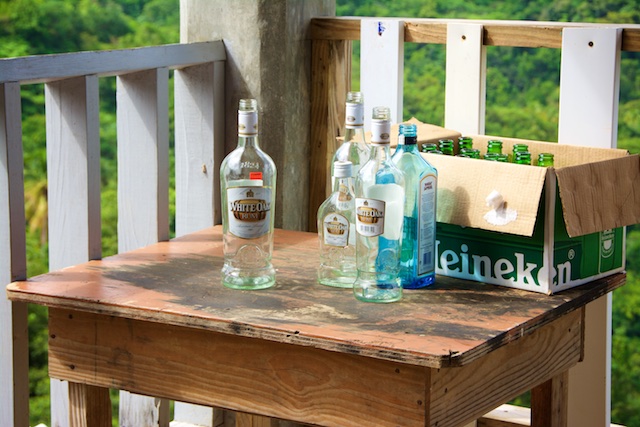
What’s left of the French language is a form of Creole that seems quite unique to Dominica. (My own knowledge of the Creole language is limited exclusively to the names of comestible food items that, when ingested outside of New Orleans, usually results in regret, deep, deep regret, either relatively immediately or, within a few hours. You know what I mean.) Still, I have to say it is testament to their good tastes that the people of Dominica, Black, Pureblood native Kalinago and mixed race alike, all chose to emulate the French, and to a lesser degree the Spanish, and not the British in their cooking. The British left them the English language when they departed. And, a parliamentary form of government. And, possibly, a sense of order unseen on other islands. Dominica is extremely tidy and the land and area around the homes, however modest, are often manicured and cultivated with enviable botanical delights. Honestly, this sounds crazy, but it’s not unlike how the Dutch wash their stone steps every day and have tulips all over the frigging place.
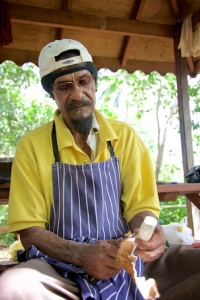
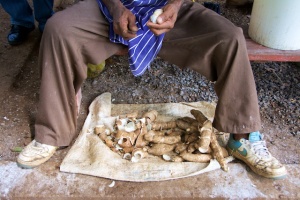
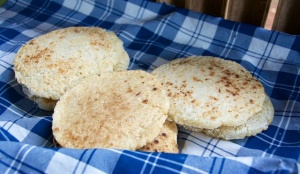
Sorry about the almost “F” word. (I have been making some attempt to keep the Destos “g” rated.) I don’t know why, but try as I may, I just can’t get those Spanish verbs conjugated the way I wish I could yet I speak smut fluently. (I must say, such fluency came in handy yesterday when some oily dude in Roseau tried to shake us down for US$5 to take a picture of a bicycle against a wall.)
Next Desto, Haiti and the D.R.
